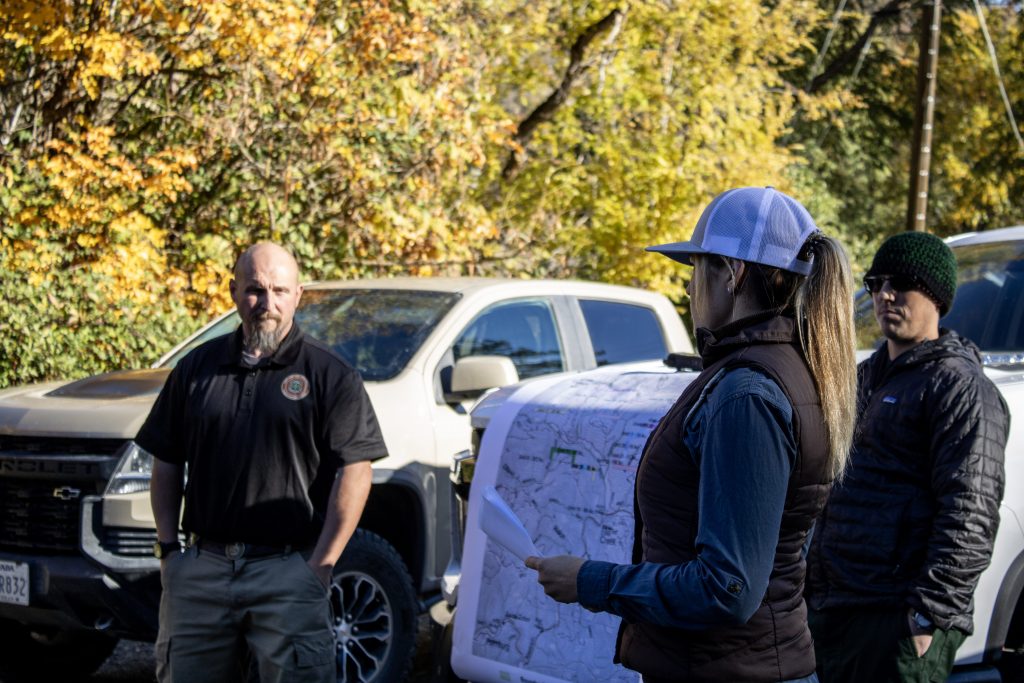Klamath River Project Brings Community and Conservation Together
Central to the mission of the National Wild Turkey Federation is the conservation of wild turkey and the preservation of our hunting heritage. Across the country, the NWTF is actively engaged in numerous projects designed not only to benefit wild turkeys but to bring about broad ecological and community benefits through forest conservation. This comprehensive approach is exemplified in NWTF’s unique partnership with the USDA Forest Service through the National Master Stewardship Agreement. In the West, this collaboration addresses the growing wildfire crisis, enhances forest health and provides benefits that amplifies the NWTF’s Four Shared Values: Clean water, healthy forests and wildlife habitats, resilient communities and robust recreational opportunities.
A recent expansion in this partnership is the Klamath River Wildland Urban Interface project. This project aims to expand forest restoration in northern California’s Klamath National Forest, addressing wildfire risk reduction and boosting forest resiliency. As a vital part of the National Wildfire Crisis Strategy, the Klamath River WUI project will enhance habitat for wild turkeys and other wildlife and reduce the threat of wildfires in neighboring communities.
The Klamath River WUI Project: Supporting Forests and Local Communities
Located near Happy Camp, California, in the Klamath National Forest, the Klamath River WUI project will directly benefit both forest ecosystems and nearby communities. Homes and private lands bordering the project area are at heightened risk from wildfires due to dense vegetation and fuel loads that can quickly escalate fires. The area has already experienced devastating fire events, such as the 2016 Gap Fire, which destroyed homes and over 30,000 acres of the forest.
The Klamath River WUI project has been welcomed by local residents who recognize its potential to protect lives, homes and critical wildlife habitat. By reducing hazardous fuels through vegetation management, the project will make an impact to all those that call the Klamath National Forest home.

“The Klamath River WUI project will directly relate to the NWTF's Four Shared Values,” said Coralee Ditman, NWTF Wildfire Crisis coordinator for Region 5. “The project will enhance wildlife habitat while protecting local communities and the Klamath River watershed. By reducing fuels, we aim to lower the risk of wildfires and prevent habitat loss, further safeguarding the watershed from future fire impacts. It’s a win-win for the environment, wildlife and the community.”
Engaging Local Contractors and Supporting Regional Economies
Large-scale conservation projects like the Klamath River WUI require an array of resources and manpower, and collaboration is crucial for success. While the NWTF and the Forest Service lead and coordinate these projects, local contractors play a vital role in on-the-ground implementation. Engaging local businesses not only supports economic development but also enables the NWTF and the Forest Service to achieve shared goals on a larger scale.
To kick off the Klamath River WUI project, the NWTF and the Forest Service recently conducted a pre-bid tour for contractors interested in taking on the work. This tour provided contractors with an in-depth look at the project scope, answered questions and prepared them to submit their bids. Implementation is expected to begin this winter, setting the stage for this important conservation work.

“The NWTF holds pre-bid tours to give contractors an on the ground look of the project area,” Ditman said. “ We work closely with the Forest Service to ensure the project specifications are clear to the contractor, supporting a smooth and efficient project implementation once a bidder is selected.”
Forest Resiliency and Wildfire Prevention in Action
The Klamath River WUI project will span 883 acres and involve a range of forest management techniques designed to mitigate wildfire risk and enhance forest health. Key activities include:
- Vegetation Management and Fuels Reduction: Slashing dead trees, thinning dense brush, pruning select trees and cutting small-diameter hardwoods and conifers. These treatments aim to decrease fuel loads and create a more resilient forest structure.
- Comprehensive Surveys: The project includes extensive surveys to guide future work, encompassing 4,000 acres of archeology surveys, 5,000 acres of botany surveys, 2,000 acres of northern spotted owl surveys and 34,000 acres of goshawk surveys. These assessments will provide valuable data to ensure future projects align with ecological and cultural conservation goals.
The Klamath River WUI project is one piece of a broader effort to address the wildfire crisis and support healthy forest ecosystems across the West. Through partnerships like the one with the USDA Forest Service, the NWTF is making significant strides in forest conservation, habitat improvement and wildfire prevention.
Learn more about the Wildfire Crisis Strategy and the relationship between wild turkeys and catastrophic wildfire prevention.
